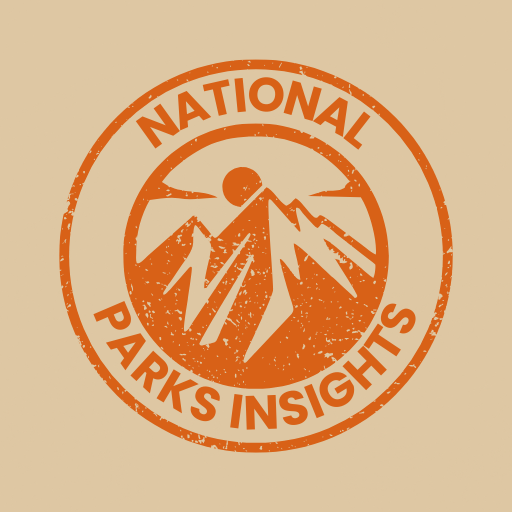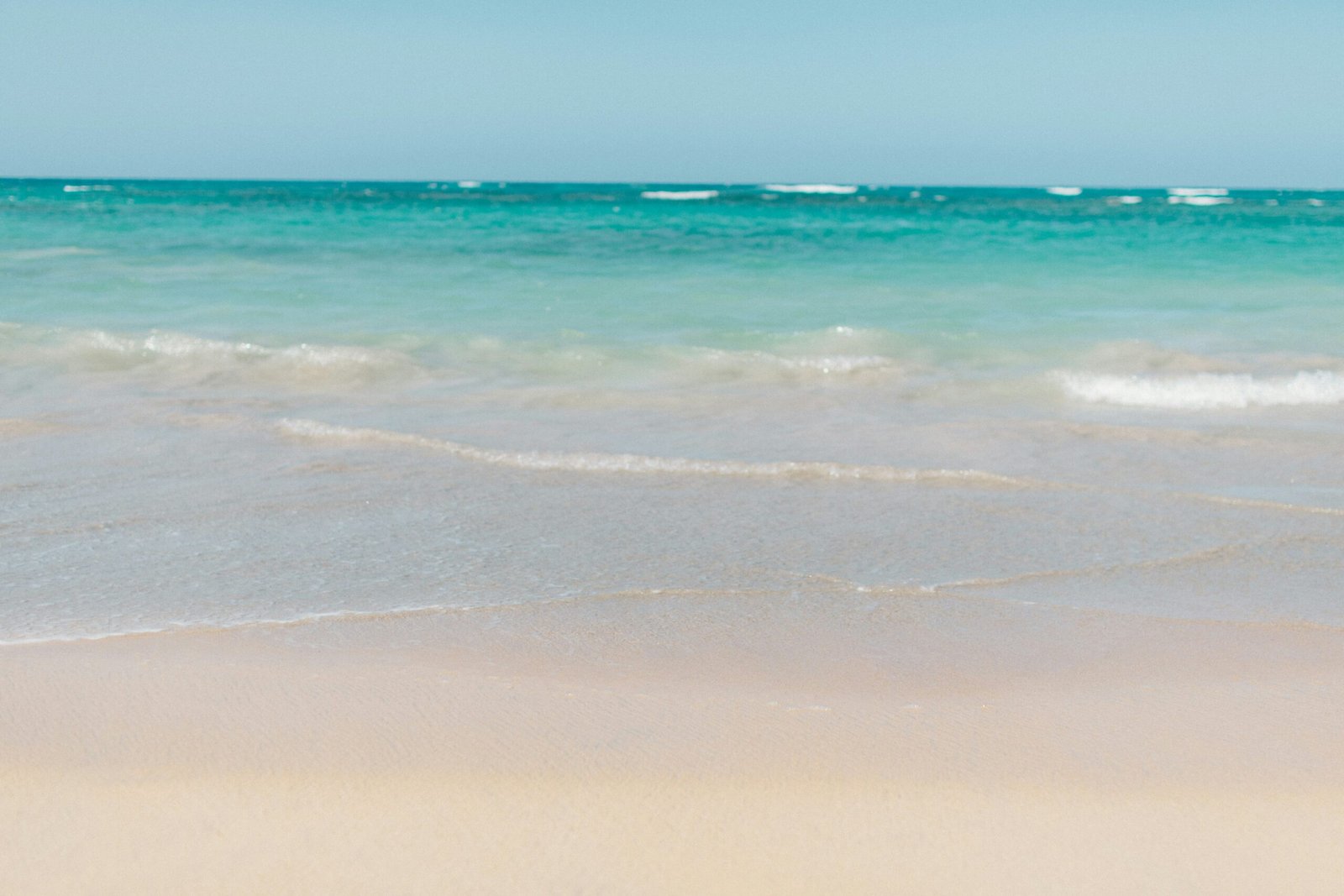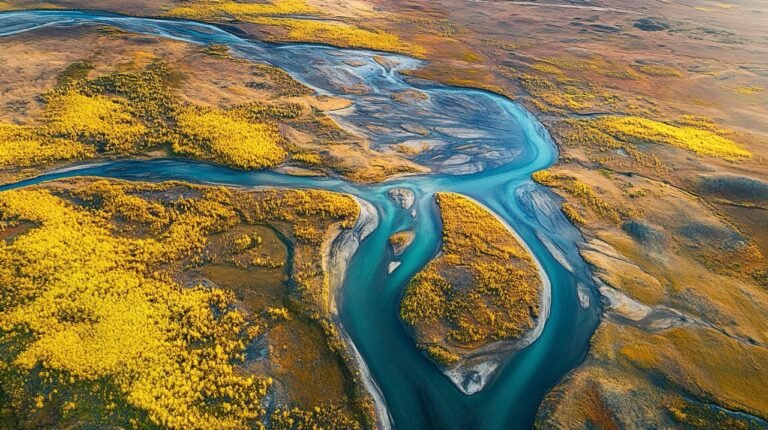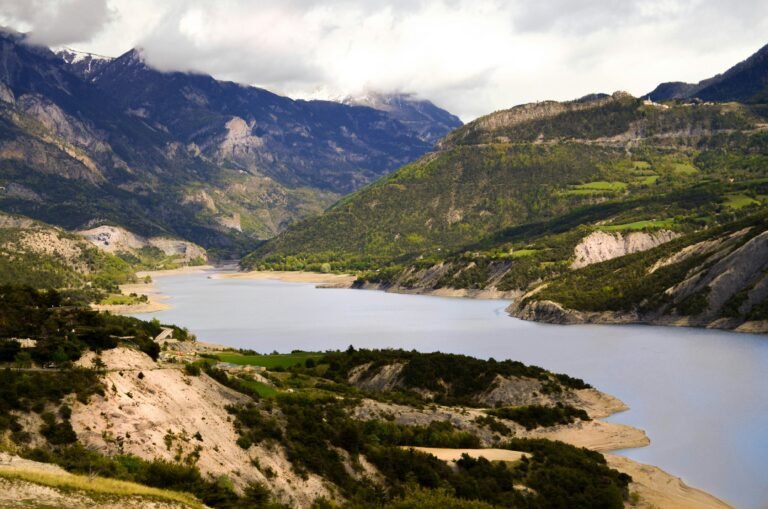Exploring Great Kobuk Sand Dunes
Kobuk Valley National Park is a bit of a secret stash in northwestern Alaska, famous for its jaw-dropping scenery and funky geological wonders. Think of this guide as your open invitation to tango with nature in this far-off park.
An Overview of the Park
We’re talking a massive area here—Kobuk Valley National Park spreads across 1.7 million acres. That’s like cramming the state of Delaware into one wild piece of Alaskan wonderland! The park was officially marked on the US map back in 1980, courtesy of the Alaska National Interest Lands Conservation Act. This spot isn’t just postcards and pretty pictures; it’s got the epic caribou migration, surreal sand dunes, and heaps of archaeological treasures to explore.
| Park Specs | Details |
|---|---|
| Total Spread | 1.7 million acres |
| Year It Got a Stamp | 1980 |
| Must-Sees | Great Kobuk Sand Dunes, Caribou Migration |
Unique Features of Kobuk Valley
The Great Kobuk Sand Dunes
Let’s talk about the star of the show: the Great Kobuk Sand Dunes, rightfully nicknamed the “Arctic Sahara.” Covering 25,000 acres, these dunes can shoot up to a stunning 100 feet. Yeah, these giant sand piles seriously mess with your Arctic expectations, providing a stark backdrop to the typical tundra vibe. Head over to our page on the great kobuk sand dunes for the dirt on these sandy wonders.
| Details | Description |
|---|---|
| Dune Spread | 25,000 acres |
| Tallest Dune | 100 feet |
The Kobuk River
We can’t forget about the Kobuk River, the park’s watery lifeline. Besides setting the scene for some sweet boating, it’s the path the caribou choose every year for their epic migration.
Caribou Migration
Now, if you haven’t seen a massive herd of caribou on the move, you’re missing out on one of nature’s gnarliest shows. Picture thousands of them trekking through the park, a sight that’ll make your heart skip a beat. Catch more deets on our kobuk valley caribou migration page.
Weather Whiplash
Park temps aren’t messing around, swinging from sizzlin’ summers at 86°F to downright bone-chilling winters at -58°F. You better check out the forecast and pack smart before setting foot here.
Step into this stunning slice of untouched wilderness by diving into the magic of Kobuk Valley’s dunes and the incredible caribou migration. Looking for a detailed rundown on what to do and see? Hover on over to our guide on visiting kobuk valley.
Discovering the Great Kobuk Sand Dunes
The Arctic Sahara
Right smack in the middle of Kobuk Valley National Park, you’ll find the jaw-dropping Great Kobuk Sand Dunes. Nicknamed the “Arctic Sahara,” this massive sandbox spreads over 25,000 acres, with some dunes reaching a whopping 100 feet high. You wouldn’t expect to find a desert in the Arctic, but that’s exactly what these dunes deliver—they’re both mind-bending and breathtaking.
The sight of these dunes will mess with your senses. They look so much like the Saharan Desert, it’s wild. Rising above the surrounding trees, these sandy formations command attention. Even though it’s tucked away in one of the most out-there locations in the US national park system, those who make the trek find it totally worth it for the thrill and the Instagram bragging rights.
Formation and Characteristics
The mystery of how these dunes came to be is a mix of ancient glacial shenanigans and wind gymnastics. Way back, glaciers crushed up rocks into super-fine powder, also known as glacial flour. Bering Sea winds then muscled these grains over to Kobuk Valley, piling up into the vast dunes we marvel at today (National Park Service).
Here’s the lowdown on the standout characteristics of the Great Kobuk Sand Dunes:
| Feature | Description |
|---|---|
| Area | 30 square miles |
| Height | Up to 100 feet |
| Summer temperatures | Up to a sizzling 100°F |
| Location | Just a hop south of the Kobuk River, close to the park’s eastern edge |
These heaps of sand are constantly on the move, thanks to the relentless whims of the wind. When summer hits, walking on the sand is like stepping on a griddle—temperatures can soar to a blistering 100°F, making sure you’re in for an adventurous, desert-like experience in the Arctic. It’s like being in your very own arctic, sandy wonderland.
Even if getting there takes some effort, the Great Kobuk Sand Dunes play an essential role in the Kobuk Valley National Park experience. If you’re planning the trip, don’t miss checking out the local wildlife and the annual caribou parade for a full-on nature extravaganza. Ready for more details about visiting Kobuk Valley? Our visitor guide has got all the must-know tips—go take a peek!
Getting to the Sand Dunes
Heading out to the Great Kobuk Sand Dunes in Kobuk Valley National Park is like embarking on a thrilling escapade. These dunes are tucked away in one of the most remote corners of the U.S., so you’ll want to plan your journey with care. Let’s break down your options for getting there, along with some idea of what it might set you back.
Access Options
Swinging by the Great Kobuk Sand Dunes isn’t your usual day trip. Check out the ways to get there:
- Flying into the Park: Most folks kick off their adventure by flying to Kotzebue, a small city in northwestern Alaska, courtesy of Alaska Airlines. From this little hub, you can hop on a chartered plane to whisk you straight to the dunes or other park spots.
- Guided Tours: If you’re up for a deep dive, why not go on a guided trip, complete with overnight camping by the dunes? These tours can really bring the place to life and give you an insider’s scoop on this one-of-a-kind landscape.
- Kobuk River Route: Feeling adventurous? Try the Kobuk River path. You’ll first fly to a nearby village from Kotzebue and then float down the river on a guided boat trip, ending with a good walk to the sand dunes.
Travel Costs and Considerations
Shelling out for a visit to the Great Kobuk Sand Dunes can range quite a bit. Here’s what to expect cost-wise:
| Expense Type | Approximate Cost (USD) |
|---|---|
| Round-trip flight to Kotzebue | $515 per person* |
| Charter flight from Kotzebue to the dunes | $765 for a couple* |
| Guided excursion on Kobuk River | $1,500 per person* |
| Extra stuff (camping gear, grub) | It’ll depend |
*Prices might jump depending on the time of year, seat availability, and if you book early or late.
Important Tidbits:
- Getting There: Air travel’s your go-to for reaching Kobuk Valley, which cranks up the travel expenses more so than many parks.
- Secluded Spot: Its location off the beaten path makes Kobuk Valley National Park quite the tough nut to crack, so plan ahead like a pro.
- Guided Trips: They boost your safety and handle logistics, but they’ll also give your budget a run for its money.
Keep these in mind to make your trip both spectacular and safe. Hungry for more advice and tips? Make sure to check our Kobuk Valley Visitor Information.
Experiencing the Sand Dunes
Activities at the Dunes
Ah, the Great Kobuk Sand Dunes—where sand and sky play tag! Whether you’re into strapping on some hiking boots, setting up a tent, or snapping that perfect pic, these dunes are just waiting for you. Let’s see what adventures they’ve got in store.
- Hiking: Ever wanted to feel like a tiny ant on a massive sand pile? Well, the dunes cover 25 square miles with peaks as tall as a ten-story building (Horizon Guides). A day spent wandering there is like being in your own epic desert dream, complete with insta-worthy shots! (Terra Galleria Blog)
- Camping: For the brave souls who want the full “sand hotel” experience, camping near the dunes is your ticket. A guided trip might just give you the sweet spot between thrill and chill (Terra Galleria Blog).
- Photography: The “Arctic Sahara” is a photographer’s jackpot. With dunes standing loud and proud at 30 meters, backdropped by lush forests, you’ve got views that could knock your socks off… if you were wearing any (NASA Earth Observatory).
Recommended Time for Exploration
What’s the best time to fling yourself into the Great Kobuk Sand Dunes? Depends on what kind of action you’re after. Here’s the lowdown:
- Short Visits: Just popping in? A quick jaunt of 30 minutes to an hour will let you stomp on the dunes and soak up some wild views. Who says you can’t have fast fun? (Terra Galleria Blog)
- Full Day Hikes: Got itchy feet and a camera? A day exploring the dunes grants ample time to traipse about, snap wildlife, and chase those sandy dreams. Always pack an extra sandwich—who knows what the wind might blow in? (Terra Galleria Blog)
- Overnight Camping: Fancy sleeping under a canopy of stars? Overnight camping offers that all-day fun and nights fit for dreamers. But keep in mind, your playground will mostly be the dunes’ sandy embrace (Terra Galleria Blog).
Before you zip up that backpack, get the scoop on Kobuk Valley weather to ensure you’re geared up, and check out Kobuk Valley NP for the 411 on planning your dusty getaway.
| Time | Suggested Activity |
|---|---|
| Short Visit | 30 minutes – 1 hour of walking |
| Full Day | Hiking and photography |
| Overnight | Camping and immersive fun |
There’s more to Kobuk Valley than just piles of sand. Peek at the wildlife in Kobuk Valley and the spectacular Kobuk Valley caribou migration—loads of action just waiting to make your visit unforgettable!
Wildlife of Kobuk Valley
Welcome to Kobuk Valley National Park, where nature rolls out a red carpet of sorts, teeming with wildlife that could make a nature documentary jealous. Imagine standing amidst the majestic Great Kobuk Sand Dunes and watching grizzly bears strut by. Your adventure list is about to get a whole lot longer, from roaming the vibrant sand dunes to floating alongside the lively Kobuk River.
Habitat and Species Diversity
Kobuk Valley isn’t just a place; it’s a party for wildlife with habitats that offer the ultimate hangout spots for its creatures. The grand sand dunes function as both playground and home for black and grizzly bears, wolves, foxes, porcupines, and moose. These massive dunes aren’t just pretty; they’re vital for making sure these critters have a solid spot to hang (National Park Service).
Moving along, the areas around Kobuk River are more of a highway, making it the perfect migration path for various species looking for new digs. Here, you’ll run into muskox, moose, black bears, sly grey wolves, and sure-footed Dall sheep going about their day.
Here’s a snapshot of the awesome creatures you might encounter in Kobuk Valley:
| Species | Habitat | Notes |
|---|---|---|
| Black Bears | Forests, Dunes | Stroll on dunes, though not for sandy views |
| Grizzly Bears | Forests, River Valleys | Keep your distance, not the huggable type |
| Wolves | Forests, Tundra | Shy but pack a punch (pun intended) |
| Foxes | Dunes, Forests | Small, nimble, seen only if you’re quick |
| Porcupines | Forests, Dunes | Spiky, mostly tree-huggers at night |
| Moose | River Valleys, Wetlands | Deer family giants lounging near water |
| Muskox | Tundra | Woolly giants owning the open lands |
| Dall Sheep | Mountainous regions | White-coated and mountain climbing pros |
Caribou Migration
Prepare to be gobsmacked by the spectacle of the Western Arctic Caribou Herd migration. We’re talking about nearly half a million caribou strutting their stuff through the park each year, leaving a trail of hoof prints like nature’s own footprints in the sand (Horizon Guides). This enormous migration isn’t just an event; it’s a mainstay of the park’s ecosystem.
Visiting the park could mean catching this wild migration show. Caribou embark on their twice-a-year trek, tracing paths that their ancestors mapped out ages ago. Protecting these age-old journeys is one of the reasons the park was created back in 1980 (Global National Parks).
Want to time your visit perfectly to catch this migration parade? Swing by our seasonal visits to Kobuk Valley section to figure out when to go for the best chance of seeing it.
If you’re itching to dive deeper into details about the wildlife, don’t miss our page all about wildlife in Kobuk Valley. And for those fascinated by the caribou journey, our guide on the kobuk valley caribou migration has got you covered.
Seasonal Visits to Kobuk Valley
Kobuk Valley National Park is a blast to visit any season. Depending on when you drop by, different features of this stunning park come alive, especially those famous Great Kobuk Sand Dunes.
Summer Adventures
Summertime at Kobuk Valley is straight-up awesome, especially when the temp hits the high 70s in July (Quirky Travel Guy). It’s prime time to jump into all sorts of outdoor fun:
- Hiking: The sunshine’s perfect for wandering up the Great Kobuk Sand Dunes and soaking in the vast views of what feels like an “Arctic Sahara.”
- Camping: Pitch a tent close to the dunes for the full-on experience. Nothing beats catching a snooze in nature’s backyard (Terra Galleria Blog).
- Boating: Drift along the Kobuk River—GPS is your buddy for finding those cool stops like the dune hikes, but you can wing it if you’re feeling adventurous.
Wanna see what the weather’s up to? Check out our Kobuk Valley weather page.
| Activity | Best Time |
|---|---|
| Hiking | Morning or Evening |
| Camping | Overnight |
| Boating | Midday |
Fall Migration Viewing
When fall rolls around, Kobuk Valley hosts something truly epic: the caribou migration. It’s one wild show:
- Caribou Migration: It’s like watching nature’s parade, with thousands of caribou trekking through the park. A jaw-dropping must-see for every nature geek.
- Photographic Opportunities: Snap away as the herds grace the backdrop of the Great Kobuk Sand Dunes in dramatic fashion.
- Cooler Temperatures: Those chillier fall temps make it comfy to hang outside longer.
Wanna know the scoop on the best spots and times to catch this natural wonder? Head on over to our Kobuk Valley caribou migration page.
| Activity | When to Catch It |
|---|---|
| Migration Viewing | Early Morning or Late Afternoon |
Whether you’re chilling in the summer or soaking in the fall vibes, Kobuk Valley offers something unforgettable. Find out what else you can stumble on over at our Kobuk Valley National Park page!
Safety and Navigation Tips
Heading out to the Great Kobuk Sand Dunes is a trip you won’t forget—just make sure to play it safe. Here’s the scoop to make your adventure not only safe but super fun!
GPS and Navigation Tools
When you’re out there, away from the hustle and bustle in Kobuk Valley National Park, a trusty GPS device is your secret weapon. It’s like having a digital compass that doesn’t lie. If you’re hiking from the Kobuk River to the dunes, this gadget keeps you on track, making sure you don’t end up in the wrong sand pit. The Terra Galleria Blog backs this up, confirming that a GPS is as handy as a pocket on a shirt when you’re plotting multiple stops or finding your favorite route.
While the Kobuk River is like a big, friendly arrow pointing the way, a GPS might help you spot those cool secret trails or landmarks you don’t want to miss.
Wildlife Safety Precautions
Kobuk Valley is like a wildlife MTV, with all sorts of creatures making cameo appearances. Here’s how not to become a bear’s best buddy:
- Respect Wildlife: Admire those animals from afar. They don’t want your snacks, or hugs, trust me.
- Secure Food and Waste: Seal up your munchies and clean up after yourself. We don’t want uninvited critter guests.
- Stay Informed: Know who’s who in the zoo. The wildlife in Kobuk Valley guide is your cheat sheet on the local stars.
- Caribou Migration Awareness: If you’re there during the caribou migration (kobuk valley caribou migration), tiptoe around them and let them do their thing without interruptions.
| Wildlife Safety Tips | Details |
|---|---|
| Respect Wildlife | Keep your distance; don’t try for close-ups |
| Secure Food & Waste | Lock up snacks and trash; tidy up |
| Stay Informed | Check out local wildlife habits |
| Caribou Awareness | Don’t spook them during migration |
Need more pointers? Swing by kobuk valley visitor information for the juicy info.
Stick to these tips and your journey to the Great Kobuk Sand Dunes will be as safe as it is epic!
Fun Facts about Kobuk Valley
Geological Significance
Nestled within Kobuk Valley National Park are the Great Kobuk Sand Dunes, towering up to 100 feet high. It’s wild to think that something more reminiscent of the Sahara exists here in the Arctic. These dunes cover around 25 square miles and are sculpted by the ever-present winds, creating an ever-changing sandscape.
Even though tundra grasses and trees cloak about 90 percent of this sandy area, the dunes still manage a sort of slow dance, shifting positions but not quite quickly in the chilly climate. This quirky interaction of desert-meets-frost offers a cool glimpse into disparate ecosystems coexisting side by side.
So, where’s all this sand from? It’s courtesy of the nearby Kobuk River, a relic from the Ice Age. Glaciers once bulldozed through here, dropping off sediment that’s now become these phenomenal dunes (NASA Earth Observatory).
Comparison to Martian Dunes
Here’s where things get really sci-fi: the Great Kobuk Sand Dunes aren’t too different from those on Mars. Yep, scientists from the Southwest Research Institute developed a nifty satellite trick to watch Martian sand move by first testing it on these Alaskan dunes (NASA Earth Observatory).
Just like their Martian cousins, the dunes here shift slowly due to icy conditions. The frozen surfaces provide these researchers with a handy analog for studying the Red Planet’s sandy bits. In doing so, they’ve unearthed (or unrocked?) some neat parallels between Earth and Mars.
| What’s Going On? | Great Kobuk Sand Dunes | Martian Dunes |
|---|---|---|
| Spot | Arctic, Kobuk Valley, US | Various Martian spots |
| How High? | Up to 100 feet | Varies |
| Shifty Business? | Slow, ‘cuz of frost | Slow, due to chilly air |
| Science-y Stuff | Earth test for Mars | Planetary studying |
Feeling the urge to take a peek? Wandering through the Great Kobuk Sand Dunes delivers a treat for the eyes and the curious mind. Whether you’re sinking your feet in the soft summer sands or catching sight of the fall caribou migration, Kobuk Valley always has something riveting to offer. For the lowdown on planning a visit, sights to check out, or critters to spot, cruise through our guide on visiting Kobuk Valley.




